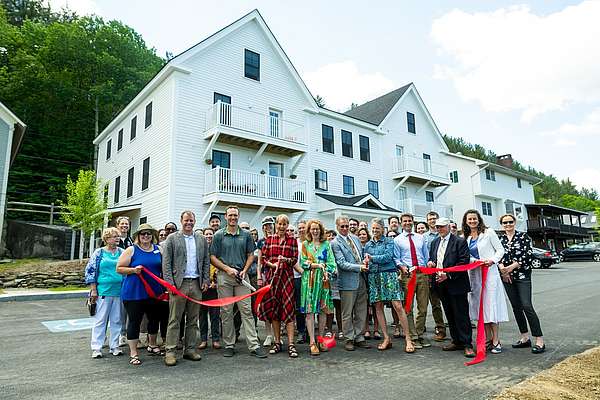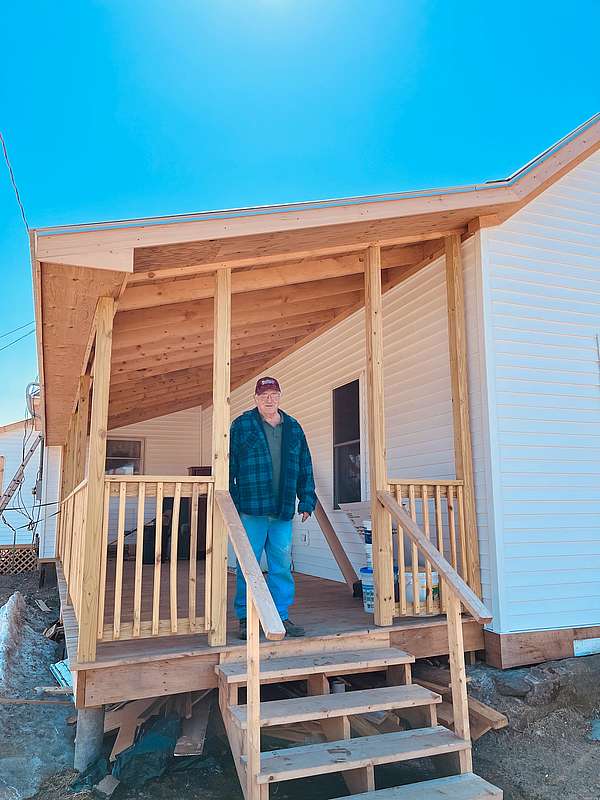Building innovative housing and conservation collaborations for a sustainable future
Housing, or the lack thereof, has become THE topic here in the Stowe area and in many places across the country. From the Stowe Reporter and national news to Town Meeting Day and the local coffee shop, the area’s shortage of workforce and affordable housing is a frequent topic of conversation and consternation.
“Our service area, Lamoille County and Hardwick, is definitely in crisis mode,” says Kerrie Lohr of Lamoille Housing Partnership, the area’s leading affordable housing nonprofit. “We’ve got long waiting lists for all our affordable housing developments, even before they are completed. We continue to see a huge need for more housing options for people across the income spectrum, especially among low- and moderate-income earning families, older people, and survivors of homelessness."
While demographic shifts previously left large areas of Vermont with shrinking populations, in places like the Stowe region, rapid growth and shifts in the housing market has placed increased pressure on limited housing stock, and intensified calls for new development. And with Lamoille County identified as the most climate resilient county in the United States, even more growth can be expected as climate migrants seeking refuge look to the northeast in the years ahead.
Making the connections
Conservation organizations like Stowe Land Trust have long been focused on protecting healthy habitats for wildlife. As regions across the country face similar housing crunches, many land trusts are beginning to view their work through a wider lens.
“A lot of conservation land trusts are now looking at their mission, their resources, and their place in their communities, and asking themselves “What is our role here? How can we help?”, says David Hindin, part-time Stowe resident and former director of the EPA’s office of compliance. “And you’ll see a lot of land trusts realizing they have an important role to play in creating sustainable communities, and this includes providing affordable housing."
With researcher and Yale graduate student, Katie Michels, Hindin recently completed a research project for the Lincoln Institute of Land Policy on how conservation land trusts and organizations focused on community housing and development are increasingly working together to address their community’s needs.
“These organizations often have missions that are complementary. Each works to deliver a set of land-based community services, ranging from permanently conserved wildlife habitat to permanently affordable housing. By working together, they can do more.” says Michels.
Looking for opportunities
For several years, Stowe Land Trust and Lamoille Housing Partnership have been in conversation about how to support each other's work, and increasingly, how to work together when opportunity knocks.
“These aren’t conversations many organizations like ours were having a generation ago,” says Stowe Land Trust executive director, Kristen Sharpless. “But today, there are a growing number of examples we can point to where two different organizations came together to complete projects that were both great for housing, and great for conservation.”
A trailblazing leader in connecting housing and conservation work has been Vermont’s Housing and Conservation Board (VHCB). Founded in 1987, VHCB supports a comprehensive approach to affordable housing and community development linked with land conservation and historic preservation and has been a long-time partner of both Stowe Land Trust and Lamoille Housing Partnership.
Partnerships such as those forged with VHCB here is Vermont are on the rise nationally. On Martha’s Vineyard, the Island Housing Trust and Martha’s Vineyard Land Bank have worked together to protect land for both conservation values, as well as to create affordable, workforce housing. Other such projects have been completed across the country, with many others currently in the pipeline.
“Not every conservation project is going to be the right fit for adding a housing component, and that’s okay,” says Hindin. “But what a lot of organizations are seeing is that there are some opportunities out there to do great work in both areas simultaneously.”
The connection between affordable housing development and land conservation enriches our human and natural communities in countless ways. Creating an infrastructure that ensures our region has access to the conserved land and affordable housing is possible through these partnerships.
Community priorities, answering the call
While we continue to search for the right project on which to collaborate, Stowe Land Trust is committed to playing an active role in the conversations that will shape the next chapter in the area’s history. With the upcoming rewrite of Stowe’s Town Plan, there are plenty of opportunities for you to get involved as well. By taking an active part in the process and supporting organizations like Lamoille Housing Partnership and Stowe Land Trust, you can help build a sustainable community that works for all, now and into the future.
Did you know that Vermont farms are facing a shortage of workforce housing too?
The Vermont Farmworker Housing Repair Loan Program through the Champlain Housing Trust (CHT) provides forgivable loans of up to $30,000 for farmers to make essential repairs and necessary improvements to their farmworker housing. Stowe’s Percy Farm received a loan through the program last year to fix up the farmhouse at the Stowe Land Trust-conserved Bouchard Farm off the Mountain Road. This is just one way housing and conservation groups are working together to find innovative solutions to challenges facing local communities and businesses.
Read inspiring examples of conservation land trust and community housing partnerships
Learn more about CHT's Farmworker Housing Repair Loan
Support the search for joint conservation and housing projects

